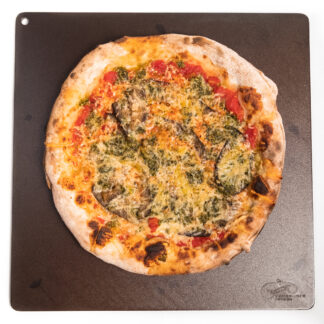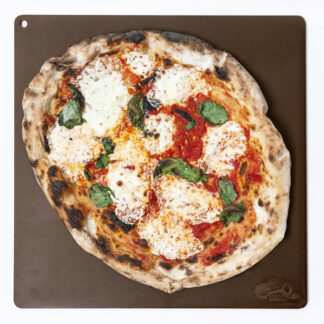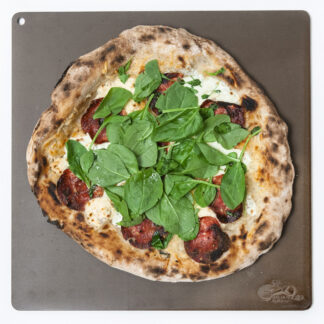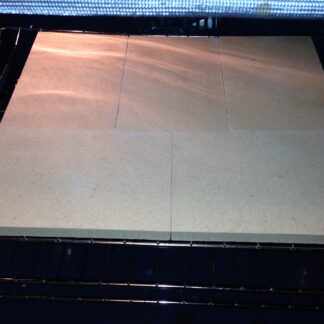We like to have an average of about 2 inches per side for baking steel and 1.5 for pizza stones. Note these are averages, so in the case of an oven where the front and back have virtually no clearance, you need to have twice the above amounts (3 inches for pizza stones and 4 inches for baking steel) on the sides.
The main consideration before placing a pizza on baking steel or a pizza stone, is whether the air above the cooking surface is hot enough that your toppings cook at the same rate as your dough. If not, you risk getting burned crust and toppings that are barely warm on top.
This is doubly important on a grill because they get much hotter and opening and closing the grill lets out a lot of heat from the dome above the cooking surface.
Joe
Category: FAQ’s
Can I leave my pizza stone or baking steel in the oven all the time
Yes, because a pizza stone or baking steel adds mass that will regulate the temperature of your oven. You should allow extra time to preheat, with the amount depending on whether or not you are cooking directly on it or it is on another shelf. I’d give it 5 extra minutes if you are not cooking directly on the steel or stone, but 20 minutes if you are.
The 20 extra minutes of preheating of your pizza stone or baking steel will allow the steel or stone to absorb enough energy to start cooking whatever you have in a pan (if the pan is directly on the steel/stone) immediately, rather than acting as an insulator and a barrier to the heat. Ovens will vary also, so you may need a little less or little more preheat time, depending on the oven.
Joe
Which baking steel is best for me?
As for the thinner vs thicker, it really comes down to whether or not, or better yet–how often you will be cooking multiple pizzas. In addition to how well a stone or steel cooks a single pizza, another true test of how effective they are is how well they handle a second or third pizza thrown on them immediately after they’ve finished cooking. This is important because cooking a pizza will drain a lot of precious heat from them. The big advantage for the thicker steels and stones then is they contain a lot of energy. This can even come into play with a single pizza.
Steel is good on any pizza but the pizza it really shines on is New York Style because the faster it cooks, the better the oven spring. The biggest benefit is between 525 and 600. You’d think the higher temperature was for the thicker steel (and all work wonderfully throughout this temperature range), but the thicker one will outperform the rest at 525 because here it’s storing a lot of energy (assuming a proper preheat, which will be longer for the thicker steel than the thinner) at the low end of NY Style’s temperature range, whereas at or near 600, it’s so hot that any will work wonderfully.
Which is better, baking steel or a pizza stone
Which is better for you, actually depends on what you are cooking. If properly preheated, you will not really get a bad result with either one. If you are getting a lot of take and bake pizzas, however, you will come across various styles, and perhaps you will even want to try your own at some point. In that case, I would recommend a stone, because stones are very versatile and also make fantastic bread.
If you are specializing in NY Style, that is when I would recommend a steel. Steels are excellent (again, proper preheating is absolutely critical) for NY Style because they transfer their heat very fast. This is important in the temperature range of about 500-600 degrees, because something that transfers its heat fast, gives much better oven spring, which makes for better pizza. Above or below that 500-600 degrees range, with NY Style or not, then steel is excellent but really has no advantage except slightly faster cooks over stones. Within the 500-600 range with NON NY Styles, your results will be similar–steel a little faster, but stones equal or better in final taste.
In the stone line, we have a 14.5″ round stone that is slightly thicker at 7/8″. It has wonderful thermal properties, but is a slightly smaller target than the 5-piece 15″ x 18″ rectangle, so a little less forgiving if you have a bad placement of your pizza.
As for the life of the product, steel is superior in case you drop them. People say steel is forever, and it is if properly cared for. Our stones, however, are made of cordierite, and although they cannot handle a drop on the floor like steel, they will not break under heat stress like most stones because cordierite have a very low coefficient of thermal expansion.





